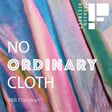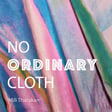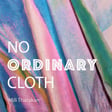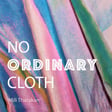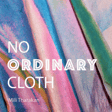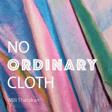
🌱 Ep 15. Brewing Beer for Bio-Leather with Brett Cotten (x Fashion District)
Special episode: No Ordinary Cloth x Fashion District
In this episode of the 'No Ordinary Cloth Podcast', we have Brett Cotten, co-founder of Arda Biomaterials, in discussion about their innovative leather alternative, New Grain made from the spent grain waste from breweries. Brett shares the establishment journey of Arda, from its founding in 2022, its recognition among Forbes 30 Under 30 and H&M's Global Change Award, to entering the competitive market with a sustainable solution.
He elaborates on his motivations for starting Arda, his educational background, and the concept of turning pain points into purposes, as described in his book 'Gene Trepeneur'.
The conversation extends to the complex challenges faced in the traditional leather industry, the innovative process behind New Grain, collaborative efforts with breweries, and insights from various accelerator programs.
Key highlights include:
- Turning a pain point into purpose and highlights from his book Gene-trepreneur
- The animal and plastic leather industry’s impact on the environment
- New grain technology and process to turn spent grain into bio-leather
- Challenges of material durability, scaling production of biomaterials, and the promising future of biomaterials in replacing conventional leather and beyond
- Investor relations and challenges
- Arda’s future material roadmap
Grab a cold beer, or your favourite drink, and get comfortable to learn all about taking waste from the craft beer industry and making it into gorgeous leather.
This is the third in a series of 6 episodes in collaboration with Fashion District, who are creating a hub for fashion innovation in east London. They connect fashion, technology, business and education to provide an ecosystem of support for fashion and textile startups that includes innovation networks, affordable space, business support and investment.
Accelerator resources: Entrepreneur First I Tech Nation I Carbon13 I Creative Destruction Lab
Connect with Arda Biomaterials: Website I Linkedin I Instagram
Book: Gene-treprenuer: Cultivating an Entrepreneurial Mindset in STEM to Impact Sutainaibility
Connect with Fashion District: Website I Instagram
Connect with Mili Tharakan: Website I Linkedin I Instagram I Buy me a coffee
Email: mili@militharakan.com
Cover art: Photo by Siora, Photography on Unsplash
Music: Inspired Ambient, Orchestraman
